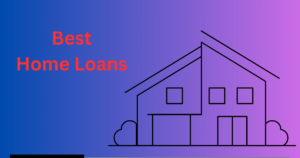How to get Home Loan
Obtaining a home loan involves several steps, from assessing your financial situation to closing on the loan. Here’s a detailed guide to help you to get it:

Assess Your Financial Situation
-
Credit Score: Check your credit score using free services like Credit Karma or through your bank. A higher score typically means better loan terms.
-
Budget: Determine how much you can afford for a down payment and monthly mortgage payments. Use online mortgage calculators to get an estimate.
-
Debt-to-Income Ratio (DTI): Calculate your DTI by dividing your monthly debt payments by your gross monthly income. Lenders prefer a DTI of 43% or lower.
Research Mortgage Options
-
Fixed-Rate Mortgage: The interest rate stays the same throughout the loan term.
-
Adjustable-Rate Mortgage (ARM): The interest rate can change periodically after an initial fixed period.
-
FHA Loan: Insured by the Federal Housing Administration, suitable for low-to-moderate-income buyers with lower credit scores.
-
VA Loan: Available to veterans and active military personnel, usually with no down payment.
-
USDA Loan: For rural property buyers, often with no down payment.
-
Conventional Loan: Not insured by the government, typically requiring a higher credit score and down payment.
Get Pre-Approved
-
Documentation: Gather necessary documents like proof of income, tax returns, bank statements, and identification.
-
Lender Application: Apply for pre-approval with multiple lenders to compare offers. This involves a hard credit check, so try to do this within a short period to minimize the impact on your credit score.
-
Pre-Approval Letter: If approved, you’ll receive a pre-approval letter stating the loan amount you’re eligible for, which strengthens your position when making an offer on a home.
Find a Home
-
Real Estate Agent: Consider hiring a real estate agent to help you find a home that fits your budget and needs.
-
House Hunting: Look for homes within your pre-approved loan amount. Attend open houses and schedule viewings.
Make an Offer
-
Offer Letter: Work with your real estate agent to make a competitive offer on the home.
-
Negotiation: Be prepared to negotiate with the seller on price and terms.
Finalize the Loan
-
Choose a Lender: Once your offer is accepted, choose a lender and complete the full loan application.
-
Home Appraisal: The lender will arrange for a home appraisal to ensure the property is worth the loan amount.
-
Home Inspection: Hire a home inspector to check for any potential issues with the property.
-
Underwriting: The lender will review your application, documentation, and appraisal report to approve the loan.
Close on the Loan
-
Closing Disclosure: Review the closing disclosure document provided by the lender, detailing the loan terms, monthly payments, and closing costs.
-
Final Walkthrough: Conduct a final walkthrough of the property to ensure it’s in the agreed-upon condition.
-
Closing Day: Sign the mortgage documents, pay closing costs, and receive the keys to your new home.
Tips for a Smooth Process
-
Stay Organized: Keep all your documents and correspondence with the lender organized.
-
Avoid Major Financial Changes: Don’t make large purchases or open new credit accounts during the loan process.
-
Communicate with Your Lender: Stay in regular contact with your lender and promptly provide any additional information they request.
By following these steps and preparing adequately, you can secure a home loan that meets your needs and helps you achieve homeownership.
Advantages of Home Loan

-
Homeownership: One of the most significant advantages of home loan is that it allows you to purchase a home without having to pay the entire purchase price upfront. This enables individuals and families to become homeowners and build equity in a property over time.
-
Affordable Payments: Home loans typically comes with lower interest rates compared to other types of loans, making the homeownership more affordable over the long term. Additionally, fixed rate mortgages offer predictable monthly payments, making the budgeting easier.
-
Tax Benefits: In many countries, homeowners can deduct mortgage interest and property taxes from their income taxes, reducing their overall tax liability. This can result in significant savings for homeowners, especially during the early years of the mortgage when interest payments are higher.
-
Build Equity: With each mortgage payment, you’re building equity in your home. Equity is the difference between the property’s market value and the remaining balance on the mortgage. As you pay down the loan and the property value increases, your equity grows, providing you with a valuable asset.
-
Long-Term Investment: Real estate historically tends to appreciate over time, meaning that the value of your home may increase. This can provide a potential return on investment if you decide to sell the property in the future.
-
Stability and Control: The rent prices can fluctuate, but with a fixed-rate mortgage, your monthly payment remains stable throughout the loan term, providing financial predictability. Additionally, owning a home gives you more control over customization, renovations, and lifestyle choices compared to renting.
-
Access to Cash: Home equity can be tapped into through options like the home equity loans or lines of credit, allowing homeowners to the borrow against the value of their property for purposes such as home improvements, debt consolidation and other major expenses.
-
Generational Wealth: Homeownership can serve as a way to pass wealth for future generations. A paid off home can be inherited or sold, providing financial security for your heirs.
Types of Home Loans
